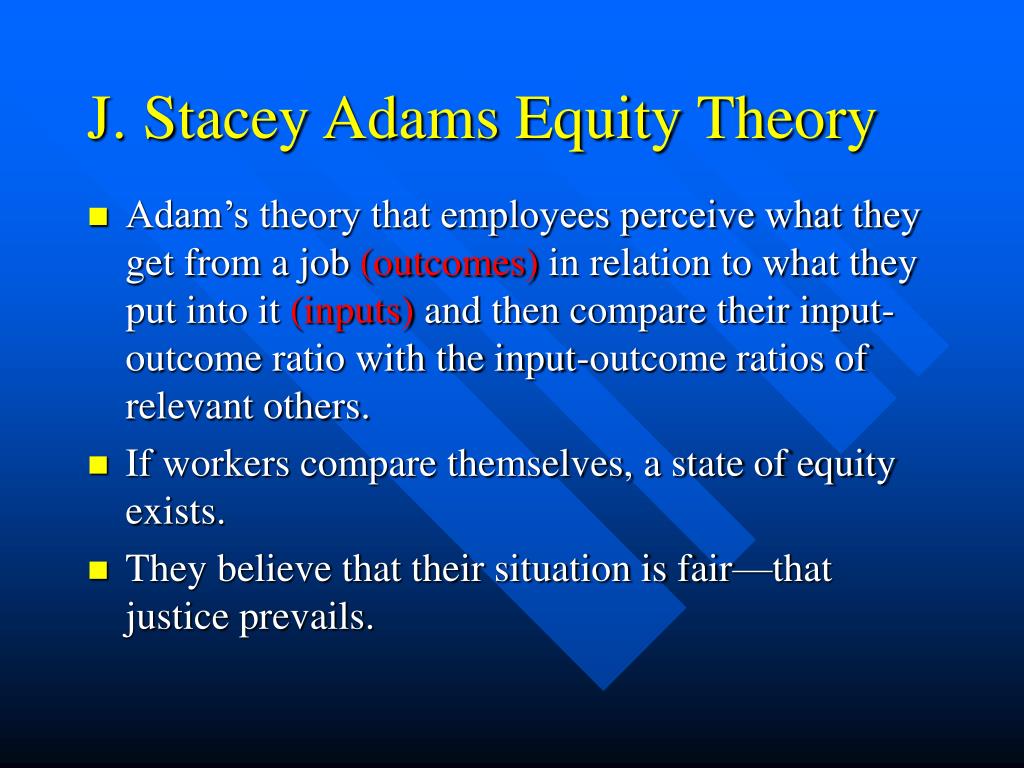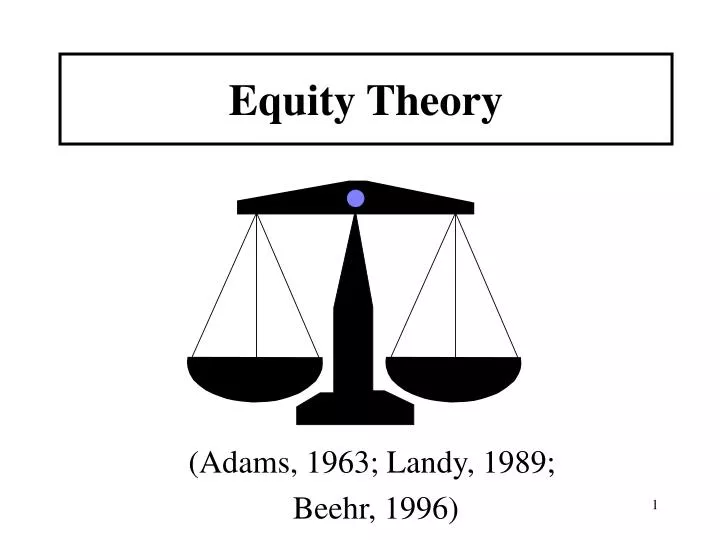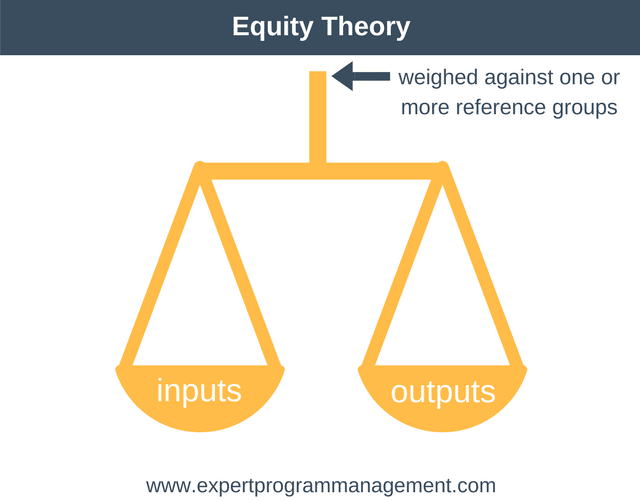Equity Theory
Equity Theory was introduced by John Stacey Adams in 1963 (Adams, 1963), originally, for application in the organisational context. The theory was developed against the lack of theoretical explanation of the psychological basis of inequity perception (Adams, 1963).

Pay Equity All You Need to Know AIHR
Overview equity theory Quick Reference A cognitive theory of motivation, based on the work of J. Stacey Adams, which claims that employees will be motivated if they believe that they are fairly treated in the workplace.

Who proposed the 'Equity Theory' in the year 1960? A) Stainley Robertz B) Steve Smith C) J
Adam's Equity Theory, also known as the Equity Theory of Motivation, was developed in 1963 by John Stacey Adams, a workplace behavioral psychologist. Equity Theory is based on the idea that individuals are motivated by fairness.
What Is Equity Theory? Ground Report
J. Stacey Adams' equity theory is a process model of motivation. It says that the level of reward we receive, compared to our own sense of our contribution, affects our motivation. The theory considers the concept of equality and fairness, as well as the importance of comparison to others.

The Equity Theory John Stacey Adams
Adams' work on equity theory is the foundation for psychological work on fairness. The focus of this work was on the fairness of outcomes, or what has become known as distributive justice. Organizational researchers recognized the potential effect of distributive justice on organizational functioning and, thus, it has been a major focus of.

Thuyết công bằng (Equity theory) của John Stacey Adams
Adams' Equity Theory is named for John Stacey Adams, a workplace and behavioral psychologist, who developed his job motivation theory in 1963. [1]

PPT Theories of Management PowerPoint Presentation, free download ID2969478
Equity Theory, otherwise known as the Equity Theory of Motivation, was introduced in 1963 by John Stacey Adams, a workplace behavioral psychologist. It is based on a simple idea. A succesful workplace can enhance team motivation by treating everyone with respect and dignity.

bradpetehoops April 2014
The Adam's Equity Theory was proposed by John Stacey Adams, and is based on the following assumptions: Individuals make contributions (inputs) for which they expect certain rewards (outcomes). To validate the exchange, an individual compares his input and outcomes with those of others and try to rectify the inequality.

PPT Equity Theory PowerPoint Presentation, free download ID4070419
The equity theory of motivation, formulated by Stacey Adams, emphasizes the importance of fairness in motivating individuals. Understanding this theory is crucial for leaders and managers seeking to create an environment that fosters employee motivation and engagement. The Basics of Equity Theory of Motivation

John stacey adams equity theory book picpassa
The Adams Equity Theory was developed by the American psychologist John Stacey Adams in 1963. It's about the balance between the effort an employee puts into their work (input), and the result they get in return (output). Input includes hard work, skills, and enthusiasm. Output can be things like salary, recognition, and responsibility.

The Equity Theory of Motivation How to Keep your team Motivated
Considered one of the justice theories, equity theory was first developed in the 1960s by J. Stacy Adams, a workplace and behavioral psychologist, who asserted that employees seek to maintain equity between the inputs that they bring to a job and the outcomes that they receive from it against the perceived inputs and outcomes of others. [2]

Leadership Lessons From Equity Theory The Interplay Between Radiologist Compensation and
Equity theory, most popularly known as equity theory of motivation, was first developed by John Stacey Adams, a workplace and behavioral psychologist, in 1963. John Stacey Adams proposed that an employee's motivation is affected by whether the employee believes that their employment benefits/rewards are at least equal to the amount of the.

PPT Motivation Theory PowerPoint Presentation, free download ID1565013
Equity theory was developed in 1963 by John Stacy Adams, an American workplace and behavioral psychologist. 1 At the time of its conception, inequity was a prevalent concern in the fields of labor and government, but it was not fully understood.

Equity Theory What’s in it for UX designers IxDF
John Stacey Adams' equity theory helps explain why pay and conditions alone do not determine motivation. It also explains why giving one person a promotion or pay-rise can have a demotivating effect on others.

Adam's Equity Theory Concept, Merits and Demerits
John Stacey Adams' Equity Motivation Theory allows you to put workplace psychology into action and increase your own or your team's motivation. Adams' equity theory builds on Maslow's Hierarchy of Needs and Herzberg's Two Factor Theory, and was first presented in 1963. In short, Adam's Equity Theory means that employees will become de-motivated if

¿Qué es la teoría de la equidad de Adams? FourWeekMBA
Adams' equity theory was developed by behavioral and organizational psychologist J. Stacy Adams in the 1960s. Adams' equity theory is a process model of motivation. The theory posits that the level of reward an individual receives compared to their own sense of contribution (and likewise for their co-workers) influences their performance.